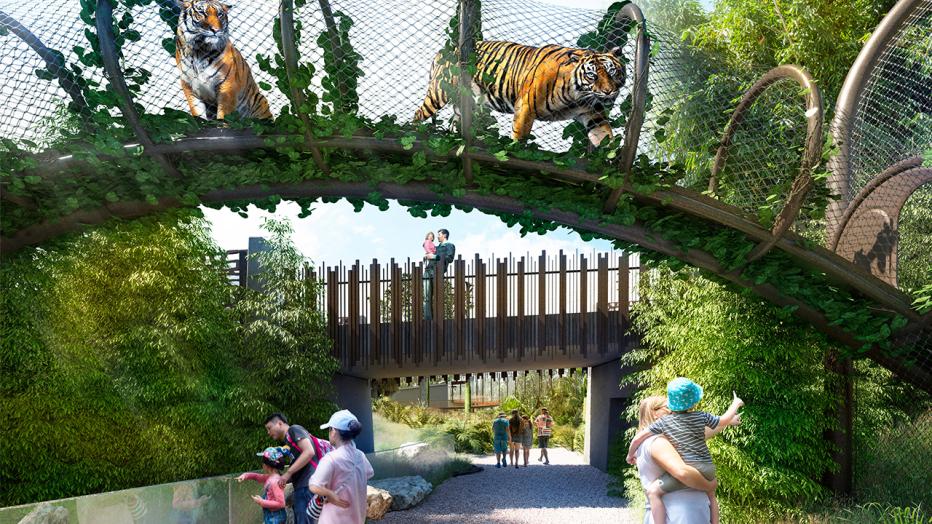
As far as projects go, our work supporting the Auckland Zoo South East Asia redevelopment project is pretty special. For the last three years, we’ve been working with Regional Facilities Auckland (RFA) and the Zoo team, to bring their vision for a more immersive zoo experience to life.
In 2016, Regional Facilities Auckland embarked on the $37.9million (NZD $60 million) redevelopment project, marking the most significant project undertaken by the zoo since its initial construction. The new development and enhancements feature immersive landscape design and aim to give visitors an unforgettable zoo experience while providing the very best habitats for the animals.
The project delivers new habitats for some of South East Asia’s most threatened species and includes a new tropical swamp forest area for Sunda gharial crocodile and a rich diversity of other reptiles and fish; orangutan and siamang care quarters and shared shelters; an overhead climbing network for the orangutans; and new otter and tiger habitats including raised overhead walkways for the Sumatran tigers to move between habitats. Completing the upgrade is a new café/function center overlooking the central lake and significant civil upgrades to the zoo’s aging infrastructure.
Construction is now well underway and the new animal habitat areas and facilities are starting to take shape.
RFA engaged Jacobs on this one-of-a-kind project as the lead engineering consultant at the project’s onset, and since then, we’ve provided a wide range of engineering services including all civil, structural, environmental, mechanical, acoustic, electrical, specialist water services, building and site services and geotechnical services.
-

Rendering of high canopy habitat at Auckland Zoo
-

Rendering of swamp forest habitat at Auckland Zoo
Working in a 96-year-old live zoo environment and managing multiple sub-contractors, all while delivering a sustainable design that mimics the animals’ natural habitat, hasn’t been without its challenges. To successfully navigate the complexity and ensure we met the client’s goals, the design process took place over 18 months before construction began.
“Our first step was to investigate the ground conditions and develop a civil and infrastructure plan from the ground up,” says Jacobs Design Team Leader Andrew Steele. “Not an easy task when you consider the zoo’s varied and challenging mix of basalt lava flow rock and poor-quality historic fill. The zoo is close to 100 years old and has a myriad of secrets to reveal under the surface.”
“Digitally, we approached the job a little differently than others. We used a combination of civil and structural digital platforms brought together through federated site models,” he explains. “This approach allowed us to communicate effectively with the numerous designers and project stakeholders to deliver an innovative and functional design.”
We used 3D laser scanning technology to define and digitally capture existing site features to compare it with the proposed network of cables and poles for the orangutan’s overhead climbing network.
“This is one of the most exciting parts of the project because it enables the orangutans to move around their habitat and other parts of the zoo at what would be natural treetop height in the wild,” adds Andrew.
The design also incorporates a range of sustainability measures such as harvesting rainwater and feeding it back into the zoo’s non-potable water storage network for use in hose-down or toilet flushing and using energy-efficient LED luminaires and automatic lighting control systems to ensure the most energy-efficient operation. Additionally, we’re installing low water fixtures to save water, using recycled materials for the boardwalks and filtering stormwater runoff to improve the water quality of the receiving streams.
Construction of the new South East Asia Jungle Track is opening in phase from this summer and will be fully completed by spring 2020.
All artist impression renderings provided courtesy of Auckland Zoo.












































